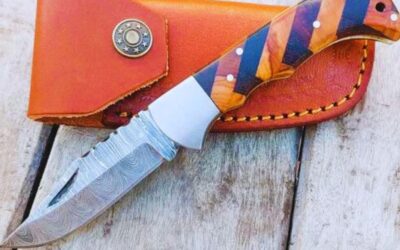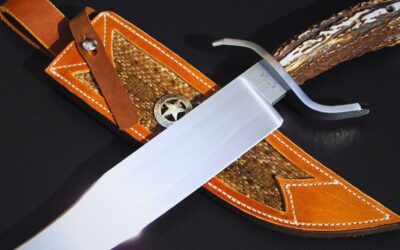Introduction to Best Kitchen Knife
Choosing the right kitchen knife can be a game-changer in your cooking experience. A good knife not only enhances your efficiency but also ensures safety and precision. This guide will walk you through everything you need to know to select the best kitchen knife for your culinary needs.
Understanding Different Types of Kitchen Knives
Chef’s Knife
Features of a Chef’s Knife
Every kitchen should have a chef’s knife. It typically ranges from 8 to 10 inches in length and has a broad, tapered blade that curves upward towards the tip.
Uses of a Chef’s Knife
This versatile knife is perfect for chopping, slicing, and dicing vegetables, fruits, and meats. Its broad blade can also be used to crush garlic and other ingredients.
Paring Knife
Features of a Paring Knife
Paring knives are small with a blade that is usually 3 to 4 inches long. They have a pointed tip and a sharp edge, making them ideal for precision tasks.
Uses of a Paring Knife
These knives are perfect for peeling, trimming, and intricate work like deveining shrimp or creating garnishes.
Bread Knife
Features of a Bread Knife
A bread knife features a long blade with serrated edges. The blade length typically ranges from 8 to 10 inches.
Uses of a Bread Knife
As the name suggests, this knife is designed for slicing through bread without crushing it. It’s also excellent for cutting through other soft or delicate items, like cakes and tomatoes.
Utility Knife
Features of a Utility Knife
Utility knives fall between a chef’s knife and a paring knife in size, usually around 6 inches long. They have a narrow, straight blade.
Uses of a Utility Knife
These knives are great for slicing and chopping smaller food items and can be used for a variety of tasks where a chef’s knife might be too large.
Boning Knife
Features of a Boning Knife
Boning knives have a narrow, flexible blade that ranges from 5 to 7 inches. The blade is often curved to allow for more precise cuts.
Uses of a Boning Knife
These knives are specifically designed for deboning meat, poultry, and fish. The flexibility of the blade helps in maneuvering around bones and joints.
Materials of Kitchen Knives
Stainless Steel
Pros of Stainless Steel
Stainless steel knives are resistant to rust and stains, making them easy to maintain. They are durable and hold their edge reasonably well.
Cons of Stainless Steel
However, they may not be as sharp as carbon steel knives and can be harder to sharpen.
Carbon Steel
Pros of Carbon Steel
Carbon steel blades are known for their sharpness and edge maintenance. They are favored by professional chefs for their cutting precision.
Cons of Carbon Steel
These knives are prone to rust and require more maintenance. They need to be dried immediately after washing and occasionally oiled to prevent rust.
Ceramic
Pros of Ceramic
Ceramic knives are extremely sharp and maintain their edge for a long time. They are lightweight and do not react with food, preventing any metallic taste.
Cons of Ceramic
They are fragile and easy to chip or break. Additionally, they require special equipment for sharpening.
Choosing the Right Knife for Your Cooking Style
Everyday Cooking
For daily cooking tasks, a versatile knife like a chef’s knife or utility knife is essential. These knives can handle a wide range of tasks from chopping vegetables to slicing meat.
Gourmet Cooking
If you enjoy gourmet cooking, investing in specialized knives such as a boning knife or a high-quality paring knife can enhance your culinary skills and precision.
Specialty Cooking
For those who frequently bake or prepare delicate dishes, having a bread knife and a filleting knife is beneficial. These knives are designed for specific tasks and can make your work much easier.
Knife Maintenance and Care
Sharpening Techniques
Using a Sharpening Stone
A sharpening stone is one of the best ways to keep your knives sharp. It requires some skill but provides excellent results.
Using a Honing Rod
Honing rods are used to maintain the edge of your knife between sharpenings. They realign the blade rather than sharpening it.
Professional Sharpening Services
For those who prefer not to sharpen their knives themselves, professional sharpening services are available. These services guarantee that your knives have been properly sharpened.
Proper Cleaning and Storage
Hand Washing vs. Dishwasher
It’s generally recommended to hand wash your knives to prevent damage from the dishwasher. Use warm water and mild soap, then dry immediately.
Storage Solutions
Store your knives in a knife block, on a magnetic strip, or in a drawer insert to protect the blades and prevent accidents.
Top Brands and Recommendations
Wüsthof
Wüsthof is a German brand known for its high-quality, durable knives. Their knives are well-balanced and favored by both professional chefs and home cooks.
Shun
Shun, a Japanese brand, offers knives that are both beautiful and incredibly sharp. Their skill and precision have earned them a reputation.
Global
Global knives are lightweight and well-balanced, making them easy to handle. They feature a modern design and are made from high-quality stainless steel.
Victorinox
Victorinox, the maker of the Swiss Army Knife, produces affordable yet high-quality kitchen knives. They are a great choice for home cooks looking for reliable performance.
Conclusion
Choosing the right kitchen knife is crucial for a pleasant cooking experience. Consider the types of knives, materials, and your cooking style when making a decision. Proper maintenance will ensure your knives last a long time and perform at their best.
FAQs
What is the most versatile kitchen knife?
The chef’s knife is the most versatile kitchen knife, suitable for a wide range of tasks including chopping, slicing, and dicing.
How often should I sharpen my kitchen knife?
It depends on usage, but generally, you should sharpen your knife every few months. Regular honing can help maintain the edge between sharpenings.
Can I use a bread knife for other tasks?
While a bread knife is designed for slicing bread, it can also be used for cutting other soft items like cakes and tomatoes.
Are expensive knives worth the investment?
Expensive knives are often made with higher-quality materials and craftsmanship, offering better performance and durability. They can be worth the investment if you cook frequently.
How do I know when it’s time to replace my knife?
If your knife is difficult to sharpen, has significant damage, or is no longer comfortable to use, it may be time to replace it.



0 Comments